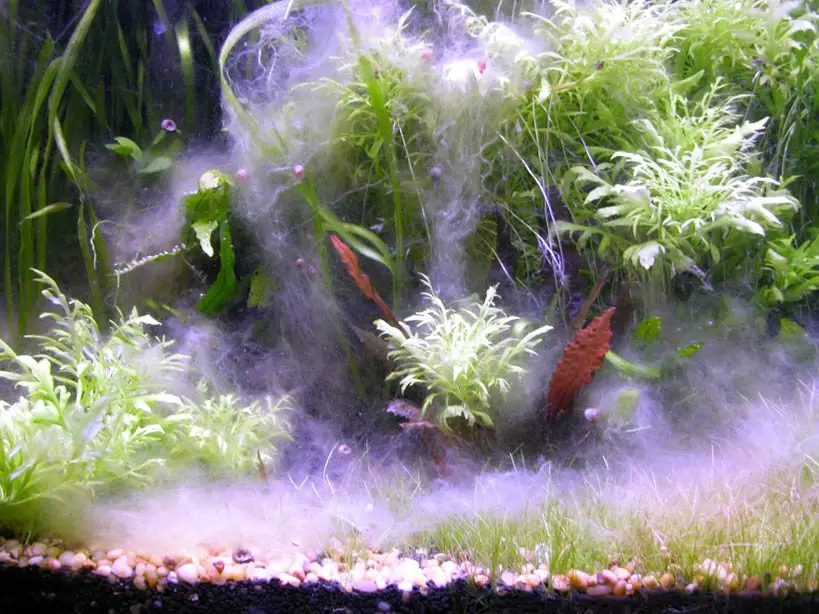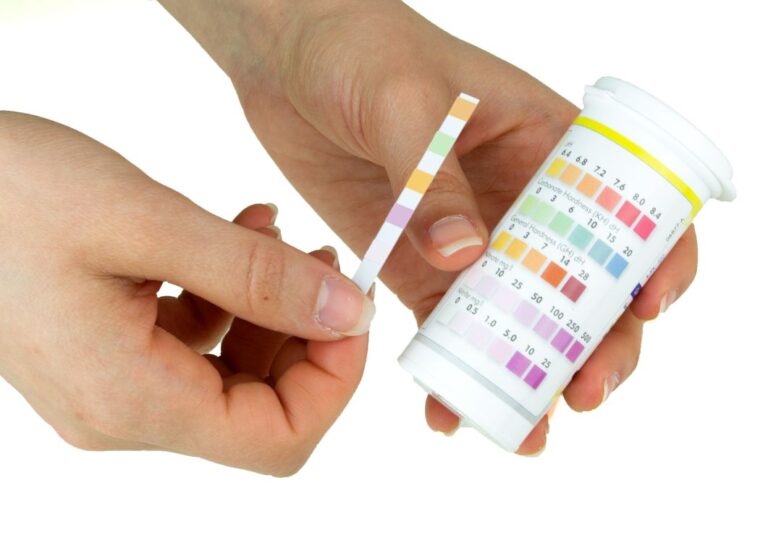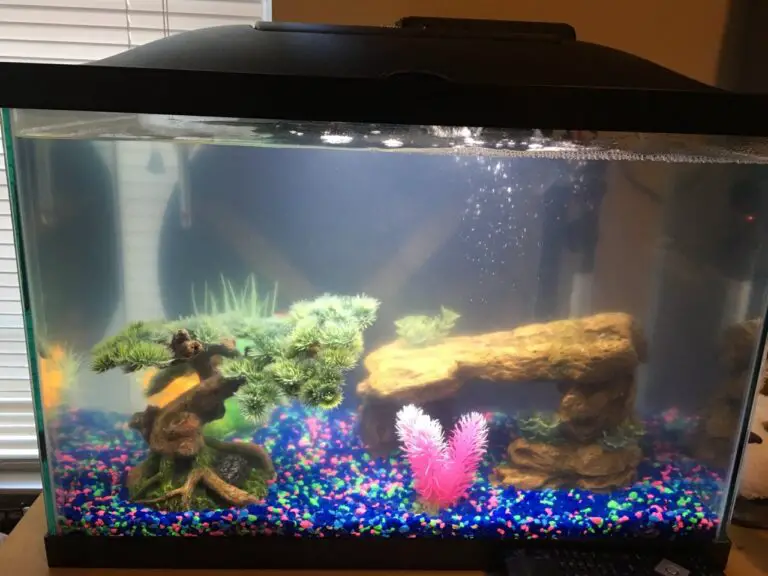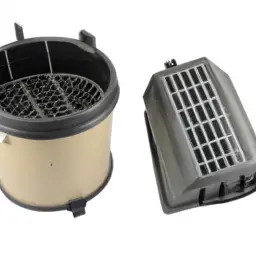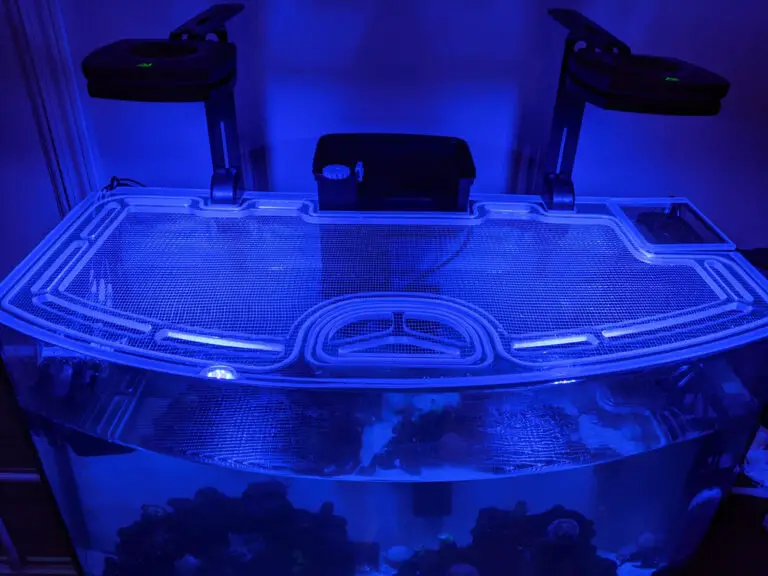How to Get Rid of White Fungus on Aquarium Plants?
1. Start by removing the affected aquarium plants from the tank and giving them a thorough rinse in warm water to remove any dirt or debris.
2. Fill a bucket with lukewarm water and add 1 teaspoon of bleach per gallon of water, then soak the plants for 15 minutes.
3. Remove the plants from the bleaching solution and rinse them off thoroughly before returning them to their original container or tank.
4. Use an old toothbrush to scrub away remaining white fungus on affected areas of your aquarium plant’s leaves or stems, as well as any visible roots attached to it.
5. Trim off any dead foliage that is still covered in white fungus with pruning shears or scissors, taking care not to spread it further across other parts of your plant’s structure while doing so if possible .
6. Increase the oxygen levels in your aquarium by adding an air stone or aerator for better circulation around all your aquatic flora which can help keep further outbreaks at bay moving forward.
- Step 1: Identify the Fungus – The first step in getting rid of white fungus on aquarium plants is to properly identify it. White fungus can be caused by several different species, including Saprolegnia and Achlya. Finding out exactly what type of fungus you are dealing with will help inform your treatment plan moving forward.
- Step 2: Remove Plant from Aquarium – Once you have identified the type of white fungus present, remove the affected plant from your aquarium right away. This will stop further spread and prevent healthy plants from becoming infected as well.
- Step 3: Treat Affected Plant – Using a fungicide specifically designed for treating aquatic plants, treat the affected area until all signs of infection disappear. Make sure not to exceed recommended dosage amounts or leave any chemical. Residues behind that could harm other fish or invertebrates living in your tank
- Step 4: Dispose Carefully – After you have treated the plant, dispose of it carefully so it does not contaminate other areas such as ponds or streams outside your home environment. If possible, burn it instead to ensure complete destruction before disposal into a trashcan or compost pile away from other water sources.
White Fungus on Fish Treatment
White fungus is a type of infection that commonly affects aquarium fish. This disease causes white spots on the skin and fins of the infected fish, and can lead to death if left untreated. Treatment for white fungus typically involves antibiotics, antifungal medications, or UV sterilization depending on the severity of the infection.
It is important to keep your tank clean and maintain good water quality as this helps prevent recurrences or new infections from occurring in your aquarium.
How to Treat White Fuzz in Fish Tank?
Having white fuzz in your fish tank can be a sign of poor water quality or an overabundance of beneficial bacteria. To treat the problem, first perform a partial water change to reduce the amount of organic matter in the tank and any nitrate levels that are too high. Next, check for other signs of distress such as cloudy water or discoloration on the fish’s skin.
If those symptoms persist, you may need to add aquarium salt to the tank and adjust pH levels if necessary. Finally, take steps to ensure proper filtration in order to maintain good overall water quality going forward.
White Cotton Like Stuff in Fish Tank
White cotton-like stuff in a fish tank is most likely the result of bacterial bloom. Bacterial blooms, also known as “cloudy water”, occur when beneficial bacteria rapidly reproduce due to an increase in organic waste or uneaten food. This can be caused by overfeeding, inadequate filtration or poor water conditions such as high nitrate levels.
To eliminate this problem, reduce the amount of food you are giving your fish and perform a partial water change with dechlorinated tap water to remove the excess waste from your aquarium. Additionally, clean out any filter media and check that it is functioning properly.
Aquarium Fungus Types
Aquarium fungus is a type of fungal infection that can affect fish, invertebrates and plants in an aquarium environment. Common types of aquarium fungus include Saprolegnia, Achlya, Fusarium and Phyllosticta. These fungi are often difficult to identify from one another as they can have different appearances depending on the species of fish or plant affected.
Proper aquarium maintenance is essential for preventing the growth of these harmful organisms; this includes regular water changes and ensuring proper filtration systems are in place.
White Algae vs White Mold
White algae and white mold are two very different organisms. White algae is a type of photosynthetic organism that grows in moist, nutrient-rich environments such as ponds or aquariums, while white mold is a type of fungus that thrives in damp areas with little light. Additionally, white algae usually appears slimy and can range in color from pink to greenish-gray, while white mold typically looks like fluffy cotton balls.
It’s important to differentiate between the two since they require different solutions for removal and prevention.
How to Get Rid of White Algae?
White algae can be tricky to get rid of, but it is possible. The first step is to reduce the amount of nutrients in your water – this can be done by making sure your tank is properly filtered and changing out approximately 25-50% of the water once per week. Secondly, you should increase circulation in your tank by adding a powerhead or two to help keep the water moving around.
Finally, if these methods don’t work, you may need to use an algaecide specifically designed for white algae treatments such as Seachem Flourish Excel or API Ponds AlgaeFix.
White Mold on Fish Tank Lid
White mold is a common occurrence on fish tank lids and can be caused by the buildup of organic matter from food, debris, or other materials. It is important to clean off white mold as soon as it appears as it can lead to poor water conditions and unhealthy tank environment for your fish. To remove white mold, you should use a soft cloth with warm soapy water or diluted bleach solution and wipe away the affected area.
Make sure not to scrub too hard in order to avoid scratching the surface of your lid. After cleaning, rinse thoroughly with fresh water before replacing on your tank.
White Fungus in New Aquarium
White Fungus is an issue that can occur when a new aquarium has been set up and the water is not properly cycled. It looks like a white, cottony growth on plants or decorations in the tank, and it can be very difficult to get rid of. In order to prevent White Fungus from occurring in your aquarium, make sure you cycle your tank correctly and always follow manufacturer instructions when setting up your system.

Credit: www.myaquariumclub.com
What is the White Stuff on My Aquarium Plants?
The white stuff that you may have noticed on your aquarium plants is most likely a type of algae. Algae are plant-like organisms that can live in an aquatic environment and range from single-celled organisms to complex species. Although algae can be beneficial for the health of your fish tank, too much of it can cause problems by reducing oxygen levels and clogging filters.
To prevent excess growth, make sure to keep the water clean and free from organic waste, as well as keeping the light exposure balanced–too little or too much sunlight will encourage algae growth. If you already have a significant amount of algae, try using chemical treatments like algaecides or UV sterilizers to reduce its presence. Lastly, consider adding some snails or other aquatic creatures who feed on algae as part of their diet; they’ll help keep your tank clean while providing an interesting addition to your aquarium!
How Do I Get Rid of Fungus in My Aquarium Water?
Getting rid of fungus in aquarium water can be a tricky, but important process. The most common cause of aquarium fungus is an imbalance in the tank’s pH level and/or poor water quality. To prevent and get rid of fungus, it’s best to start with regular maintenance such as frequent partial water changes (about 25-30% every two weeks), removing any dead or rotting plants from the tank, and filtering out uneaten food particles.
Additionally, you should ensure that your filter is working properly and not clogged up so that it can efficiently cycle through the water. You may also want to consider adding beneficial bacteria to your tank which will help keep toxins at bay while also keeping levels balanced. Finally, if there is still a presence of fungi after taking all these steps then you may need to further treat the aquarium by using anti-fungal medications specifically designed for aquatic tanks; however make sure you read the instructions carefully before doing this treatment as they can be quite dangerous if used incorrectly!
Why is White Fungus Growing on My Log in My Aquarium?
White fungus growing on logs in aquariums is a common issue and can be caused by a number of factors. The most likely culprit is too much moisture in the tank, which can lead to an increase in bacteria and fungi growth. Other possible causes include high levels of nitrates or phosphates, as well as poor water circulation or filtration, inadequate lighting, overcrowding with fish, overfeeding your fish, or temperature fluctuations.
Regardless of the cause, it’s important to take action right away to stop the spread of white fungus before it becomes a bigger problem for your aquatic life. To control white fungus growth you should first test your water parameters (nitrates and phosphates) and ensure that they are within acceptable levels for your species of fish. You should also make sure that there is adequate filtration/circulation in the tank and adjust any settings accordingly if not up to par.
Additionally remove any decaying plant matter from the tank as this could be contributing to higher nutrient levels which would promote fungal growth; replacing old filter media may help as well. Lastly reduce feeding amounts so uneaten food does not accumulate in the tank leading to increased bacterial loads; perform weekly partial water changes in order to maintain cleanliness while replenishing lost minerals needed by plants/fish alike!
What Causes White Fungus on Fish?
White fungus on fish is caused by a type of infection known as Saprolegnia. It is an opportunistic organism that can take hold when the environment becomes favorable for it, such as when water temperatures drop or if there are high levels of organic material in the tank. The fungus thrives in these conditions, and can spread quickly among fish by contact with other infected individuals or through contaminated equipment, plants and decorations.
Fish weakened by stress due to overcrowding, poor water quality or improper nutrition may be more susceptible to Saprolegnia infections than healthy specimens. Treatment typically involves keeping up good aquarium maintenance practices such as performing regular water changes and testing for ammonia and nitrites levels; removing any dead tissue from the affected areas; raising the temperature of the tank slightly; adding salt to increase salinity (this helps to inhibit fungal growth); treating with a specific antifungal medication designed for aquarium use; quarantining sick fish away from others until they recover; and providing adequate space so that all inhabitants have room to breathe freely without competition from other tankmates.
Aquatasy – The Fungus Among Us – What To Do If You Have White Fungus Growing On Your Aquarium Wood
Conclusion
In conclusion, white fungus on aquarium plants is a common problem that can be difficult to get rid of. However, by following the steps outlined in this article, you will be able to effectively treat and eliminate white fungus from your aquarium plants. With proper preventative maintenance and regular water changes, you can ensure that your aquatic environment remains healthy and free of fungal diseases.
